 1988 Volkswagen Passat (B3) Dimensions, Size & Specs
1988 Volkswagen Passat (B3) Dimensions, Size & SpecsMeasurements of the 1988 Volkswagen Passat, engineered for optimal performance and comfort
| Dimensions | |
|---|---|
| Length: | 4573-4595 mm180.0-180.9 in15.0-15.1 ft |
| Width: | 1705 mm67.1 in5.6 ft |
| Height: | 1428-1480 mm56.2-58.3 in4.7-4.9 ft |
| Trunk Capacity: | 495-580 liter17.5-20.5 cu ft |
| Trunk Capacity (Max): | 820-1500 liter29.0-53.0 cu ft |
| Weight Specifications | |
| Curb Weight: | 1106-1355 kg2438-2987 lbs |
| Maximal permitted Weight: | 1600-1860 kg3527-4101 lbs |
| Roof Load: | 75 kg165 lbs |
| Tire Specifications | |
| Rims Sizes: | 14-inch rims:
|
| Tire Sizes: |
|
The Volkswagen Passat B3, produced from 1988 to 1993, represents the third generation of the iconic Passat mid-size sedan line. Designed with a focus on spaciousness and functionality, this generation marked a distinctive step in Volkswagen’s sedan offerings. The Passat B3 spans a length between 4573 mm and 4595 mm (approximately 180.1 to 180.9 inches), providing ample cabin space and road presence. Its width ranges narrowly from 1704 mm to 1705 mm (67.1 to 67.1 inches), complementing the car’s balanced and stable stance. The height varies between 1428 mm and 1480 mm (56.2 to 58.3 inches), offering a slightly elevated roofline for comfortable headroom inside the cabin.
Weight-wise, the Passat B3 has a curb weight ranging from 1106 kg to 1355 kg (2438 to 2987 lbs), depending on the configuration and trim levels, while the maximum permissible weight extends up to 1600 kg to 1860 kg (3527 to 4101 lbs), suitable for carrying passengers and cargo efficiently. The luggage capacity is flexible and practical: the trunk alone offers between 495 liters and 580 liters (17.5 to 20.5 cubic feet) of space, which can be significantly expanded by folding the rear seats, reaching from 820 liters to 1500 liters (28.9 to 53 cubic feet). This highlights the model’s versatility for carrying larger items or securing additional storage.
In terms of roof load capacity, the Passat B3 supports up to 75 kg (165 lbs), allowing for roof racks or cargo carriers without compromising stability. The car rides on rims ranging from 5.5J x 14 inches up to 6J x 15 inches, depending on variants, fitted with tire sizes including 165/70 R14, 185/65 R14, 175/60 R14, 195/60 R14, and 205/50 R15 V, ensuring a range of options for grip and ride comfort.
Overall, the Volkswagen Passat B3 stands as a well-proportioned and versatile sedan from the late 1980s and early 1990s. Its dimensions and capacity reflect practical design tailored for family use, daily commuting, and moderate cargo transport, making it a robust choice for those interested in classic mid-size sedans with a blend of efficiency and comfort.
Discover the standout features that make the 1988 Volkswagen Passat a leader in its class
Have a question? Please check our knowledgebase first.
The Volkswagen Passat B3, produced from 1988 to 1993, has a length ranging from 4573 mm to 4595 mm (approximately 180.1 to 180.9 inches). These slight variations in length depend on specific model trims and optional equipment which might affect bumper design or external features. The length is well-suited for a mid-size sedan, offering a balance between interior space and overall maneuverability.
The width of the Volkswagen Passat B3 spans from 1704 mm to 1705 mm (about 67.1 inches). This moderate width provides comfortable interior space for both front and rear passengers while maintaining a size that fits well on typical city streets. While it's wider than many compact cars, the Passat B3 remains manageable in urban environments. Parking sensors or careful driving should mitigate difficulties related to its width.
The Passat B3 varies in height from 1428 mm to 1480 mm (56.2 to 58.3 inches). This range supports ample headroom for passengers, enhancing comfort especially on longer drives. The slightly taller versions could be attributed to different trims or suspension setups. Aerodynamically, the relatively low height compared to SUVs aids in fuel efficiency and vehicle stability at speed.
The curb weight of the Volkswagen Passat B3 ranges from 1106 kg to 1355 kg (2440 to 2987 pounds), depending on engine type, trim level, and optional features. Meanwhile, its maximum permissible weight lies between 1600 kg and 1860 kg (3527 to 4101 pounds), which includes passengers and cargo. A lighter curb weight aids in nimble handling and fuel efficiency, while the specified maximum weight ensures safe load capacity without compromising vehicle stability.
The Volkswagen Passat B3 offers versatile cargo space, with a luggage capacity ranging from 495 to 580 liters (17.5 to 20.5 cubic feet) when the rear seats are in their usual upright position. When these seats are folded down, capacity significantly expands between 820 and 1500 liters (28.9 to 53.0 cubic feet), allowing bulky items or larger loads to be transported easily. This flexibility makes the Passat B3 suitable for families and long trips requiring ample storage.
The roof load limit for the Volkswagen Passat B3 is 75 kg (165 pounds). This means that any roof racks, cargo boxes, or other rooftop accessories plus their contents should not exceed this weight to maintain safe handling and avoid damage to the vehicle's structure. Owners should ensure even distribution of weight and secure fastening to prevent any risk while driving.
Yes, the Volkswagen Passat B3 fits comfortably into a standard residential garage. Its maximum length of 4595 mm (approximately 4.6 meters or 15 feet), width of about 1705 mm (5.6 feet), and height up to 1480 mm (4.85 feet) are within typical garage dimensions, which are often around 6 meters in length and 3 meters in width. However, owners should allow some extra space for opening doors and maneuvering around the car inside the garage.
Compared to the Passat B2, the B3 generation is slightly larger in length and width, emphasizing a more modern and aerodynamic design without a traditional front grille. The length of the B3 spans roughly 4573-4595 mm, which is an increase over the B2's approximate length of around 4450 mm. The B3's curb weight ranges from 1106 to 1355 kg compared to the lighter B2, reflecting added structural reinforcements and features which contribute to comfort and safety improvements. Overall, the B3 offers more interior space and luggage capacity, indicating Volkswagen’s intent to enhance passenger comfort and practicality in this evolution.
The Volkswagen Passat B3 holds its own among mid-size sedans of its era regarding dimensions and functionality. Its length around 4.57 to 4.60 meters and width of about 1.7 meters aligns closely with competitors like the Ford Mondeo, Opel Vectra, or Honda Accord from the late '80s and early '90s. Luggage capacity, especially with folding rear seats (up to 1500 liters), often exceeds many contemporaries, highlighting its practicality. Additionally, the distinctive front design with the 'no grille' look set it apart stylistically, while the range of tires and rims sizes offered flexibility in handling and comfort tailored to consumer preferences.
The Volkswagen Passat B3 offers various tire sizes including 165/70 R14, 185/65 R14, 175/60 R14, 195/60 R14, and 205/50 R15 V, paired with rim sizes ranging from 5.5J x 14 to 6J x 15 inches. Smaller tires such as 165/70 R14 contribute to a smoother and more comfortable ride, ideal for city driving, while wider tires like 205/50 R15 offer improved grip and handling, especially at higher speeds or on winding roads. This range in tire and rim sizes allowed owners to prioritize either comfort or sportier driving attributes depending on preferences.
Discover similar sized cars.
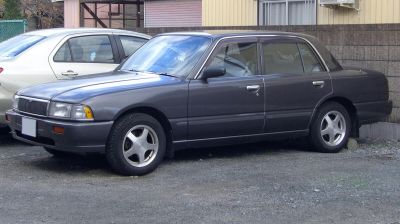
| Production: | 1994-1998 |
|---|---|
| Model Year: | 1994 |
| Length: | 4595 mm180.9 in |
| Width: | 1695 mm66.7 in |
| Height: | 1460 mm57.5 in |
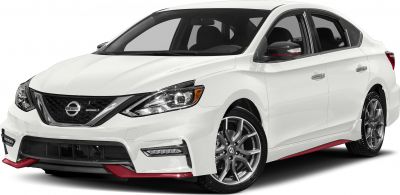
| Production: | 2016-2019 |
|---|---|
| Model Year: | 2016 |
| Length: | 4625-4663 mm182.1-183.6 in |
| Width: | 1760 mm69.3 in |
| Height: | 1499 mm59.0 in |

| Production: | 2016-2019 |
|---|---|
| Model Year: | 2016 |
| Length: | 4631 mm182.3 in |
| Width: | 1760 mm69.3 in |
| Height: | 1503 mm59.2 in |
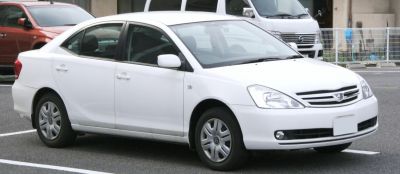
| Production: | 2001-2004 |
|---|---|
| Model Year: | 2001 |
| Length: | 4600 mm181.1 in |
| Width: | 1695 mm66.7 in |
| Height: | 1470 mm57.9 in |
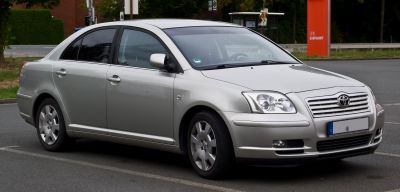
| Production: | 2003-2009 |
|---|---|
| Model Year: | 2003 |
| Length: | 4630 mm182.3 in |
| Width: | 1760 mm69.3 in |
| Height: | 1480 mm58.3 in |
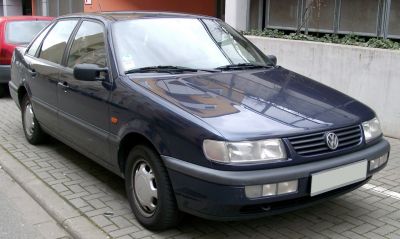
| Production: | 1993-1996 |
|---|---|
| Model Year: | 1993 |
| Length: | 4605 mm181.3 in |
| Width: | 1720 mm67.7 in |
| Height: | 1430 mm56.3 in |
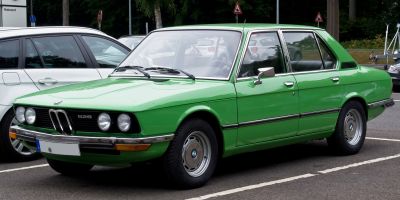
| Production: | 1972-1976 |
|---|---|
| Model Year: | 1972 |
| Length: | 4620 mm181.9 in |
| Width: | 1690 mm66.5 in |
| Height: | 1425 mm56.1 in |
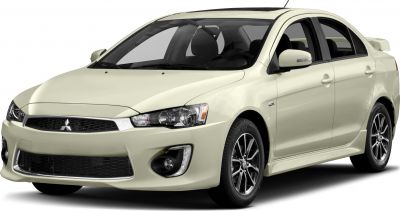
| Production: | 2015-2017 |
|---|---|
| Model Year: | 2016 |
| Length: | 4625 mm182.1 in |
| Width: | 2029-2044 mm79.9-80.5 in |
| Height: | 1480 mm58.3 in |
